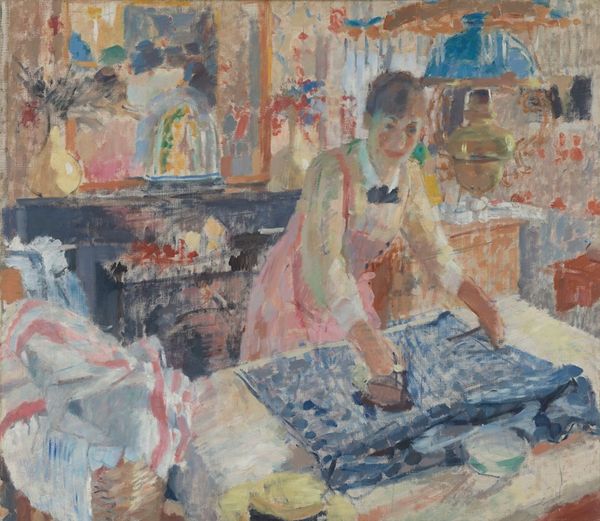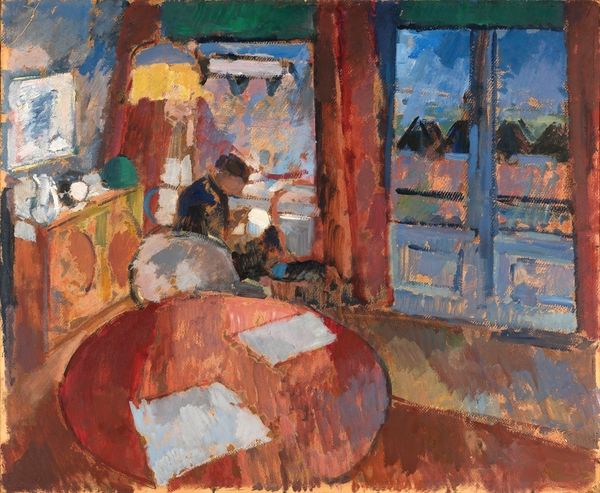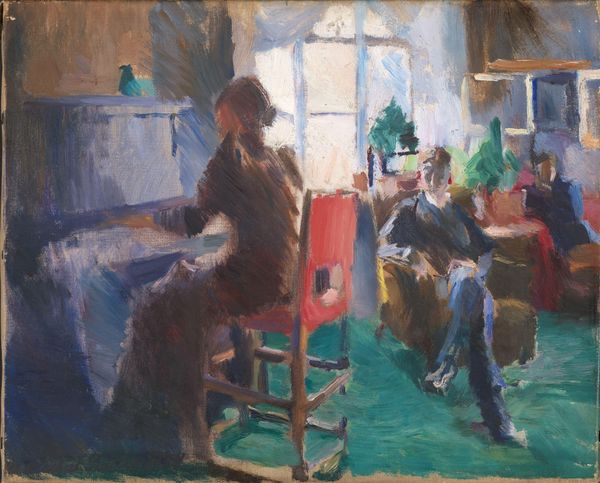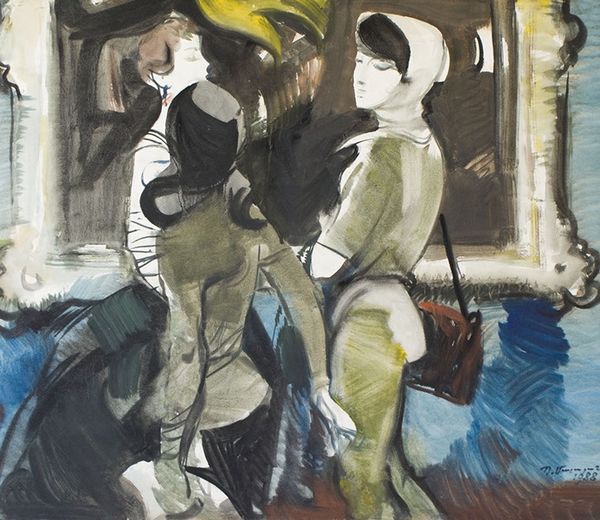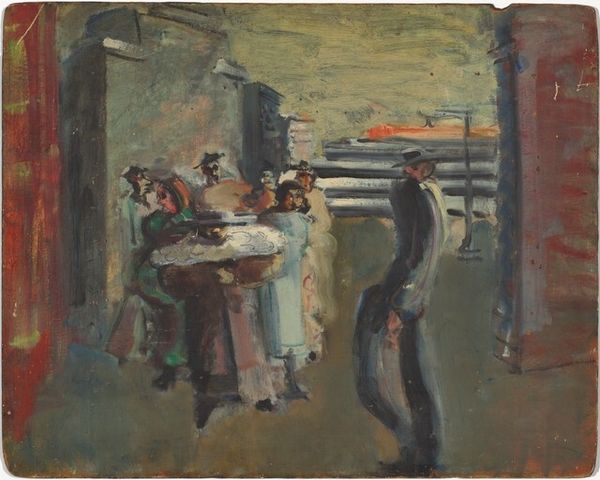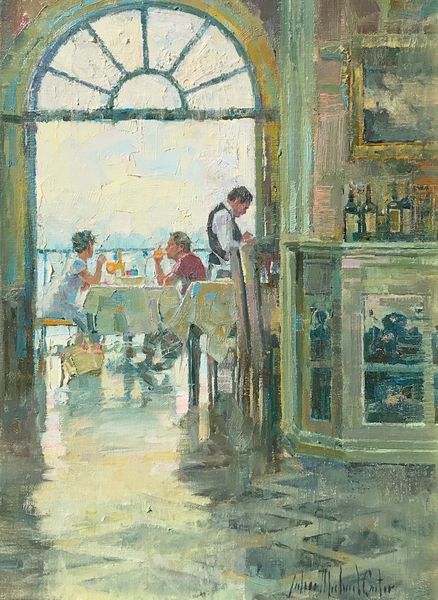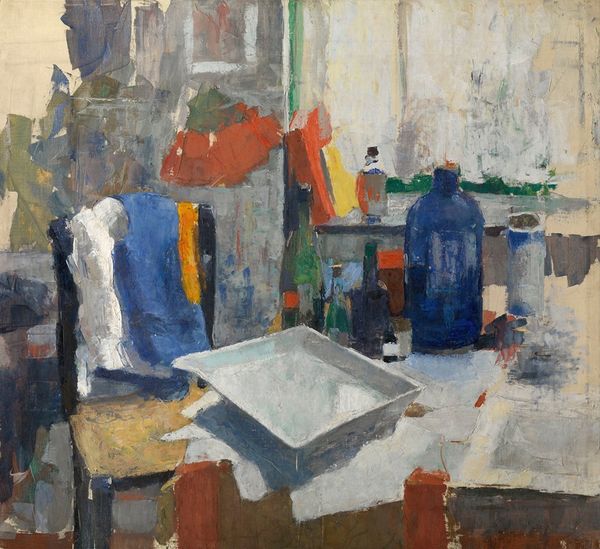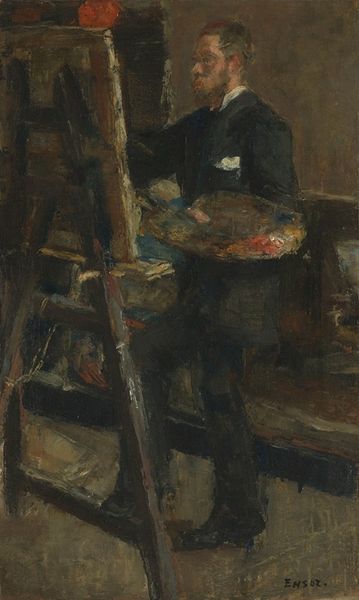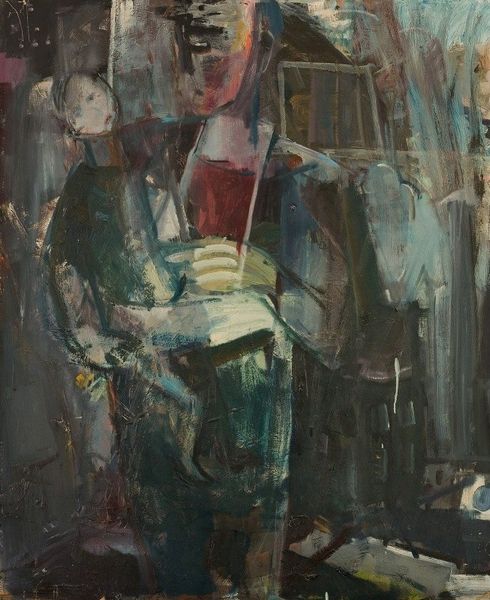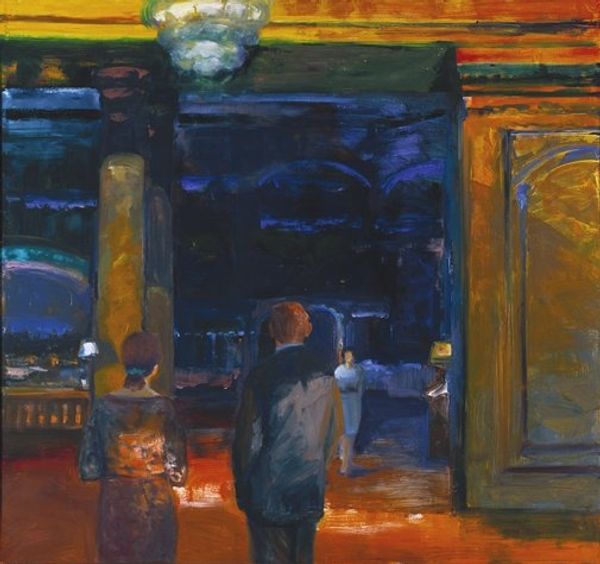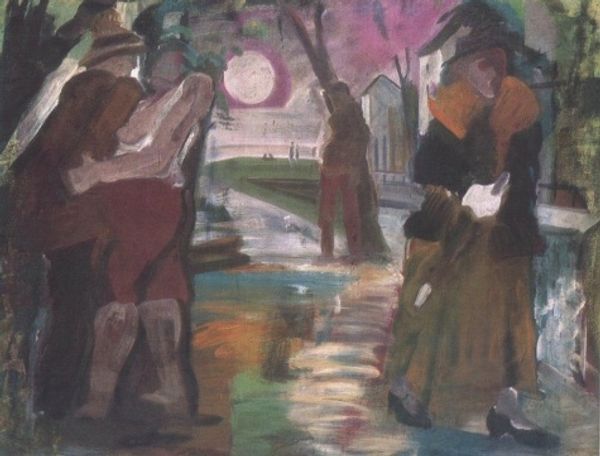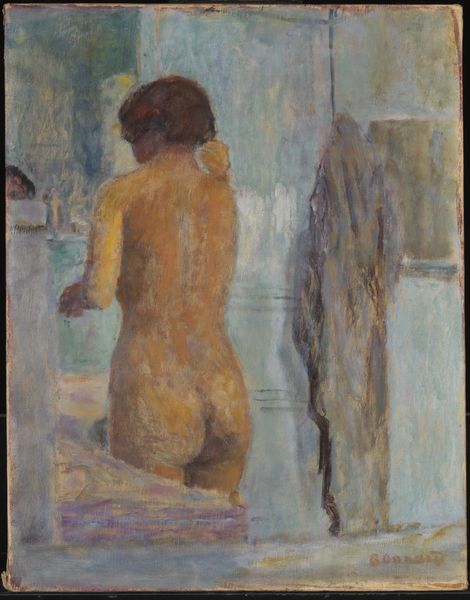
painting, oil-paint, impasto
#
portrait
#
fauvism
#
rough brush stroke
#
painting
#
oil-paint
#
landscape
#
painted
#
impasto
#
modernism
Copyright: Public Domain: Artvee
Curator: Here we have Rik Wouters's 1908 oil painting, "The Painter on the Hoogbrug in Mechelen". Editor: It has such a gritty, unrefined quality to it. You can really feel the texture of the paint, like he sculpted the scene more than painted it. Curator: Yes, Wouters was associated with Fauvism. You can observe the thick impasto and how he used visible brushstrokes to define the forms and create a sense of movement and light. What does it evoke for you? Editor: It feels raw, almost like a sketch but executed with the urgency of documenting labor. The material reality is right there—you see him holding his palette, his stance suggesting focused work amidst an everyday landscape. It definitely transcends pretty pictures. Curator: Absolutely. I find it compelling how Wouters positions himself, and possibly his wife, in relation to the Hoogbrug in Mechelen, engaging with his contemporary world and the burgeoning avant-garde art scene. This connects with the larger discourses around artistic identity. His painting becomes a performative statement. Editor: Indeed, it draws attention to the performative aspect of artistic labor. We witness the making of art, challenging traditional views of it. By painting en plein air on a functional bridge, the boundary between the fine art and mundane physicality erodes and asks important questions of authenticity and the economics of painting itself. Curator: It highlights how art and life are intertwined. Wouters wasn't just painting a pretty picture; he was actively participating in and commenting on the rapidly changing social and industrial landscape of his time. Editor: And this awareness adds layers of social narrative—the location itself, a bridge used for working activity, lends a poignant meaning about passage, transition, industry and production. Curator: Looking at it from today's vantage, it pushes us to consider art not just as aesthetic expression but also as a lens through which we examine society's operations, struggles, and transformations. Editor: Precisely! It encourages us to rethink what counts as art and question assumptions about creativity's relation to real production in contemporary economies. Curator: It makes you really want to learn more about Rik Wouters and his milieu. Editor: I’ll definitely check the shops and archives for anything relevant on the working practices, locations and social issues in art in early twentieth-century Belgium.
Comments
No comments
Be the first to comment and join the conversation on the ultimate creative platform.
